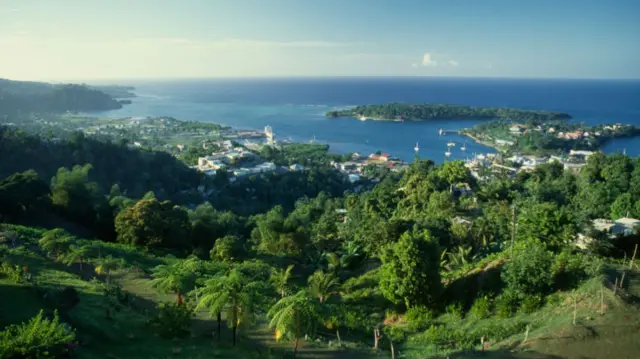Hurricane Melissa has continued its devastating sweep across the Caribbean, decimating homes and infrastructure, flooding neighbourhoods and leaving dozens dead.
The impact in Jamaica was clearer on Wednesday, after the island nation was targeted squarely by the category five monster – one of the most powerful hurricanes ever measured in the region. At least five people have been confirmed dead there.
At least another 20 died during flooding in Haiti as Melissa, now a category one storm, tears through the region.
In Jamaica, people remain stranded on roofs and without power. Prime Minister Andrew Holness noted the “total devastation” across the island-nation.
He added that “80-90% of roofs were destroyed”, along with hospitals, libraries, police stations, port houses and other urban infrastructure.
King Charles, who is the head of state in Jamaica, said in a statement that he is “deeply concerned” and “profoundly saddened” at the damage caused by Melissa in Jamaica and across the Caribbean.
“This most dreadful of record-breaking storms reminds us of the increasingly urgent need to restore the balance and harmony of Nature for the sake of all those whose lives and livelihoods may have been shattered by this heartbreaking disaster,” he said.
From Jamaica, where the storm also caused mudslides, and palm trees to be tossed like toothpicks, Melissa moved north to Cuba as a category three storm, bringing 115 mph winds and heavy rain, and battering the south east of the island.
Rovier Mesa Rodríguez, a video maker who lives in Santiago de Cuba, called the storm “terrifying” and described it sounding “like a tornado”.
Cuba President Miguel Díaz-Canel asked residents to “not let their guard down” and said that the country prepared for a worst-case scenario, which helped its response.
The hurricane began moving north east towards The Bahamas on Wednesday. A dangerous storm surge is expected there before it moves further north toward Bermuda.
A tropical storm warning is in place for the Turks and Caicos Islands and the speed of the slow-moving hurricane is expected to increase in the coming days.
In Jamaica, three men and a woman were confirmed dead. They were discovered after being washed up by the flood waters in the storm, said Desmond McKenzie, Jamaica’s minister of Local Government and Community Development.
About three-quarters of the country lost electricity overnight.
Richard Vernon, mayor of Montego Bay, told the BBC that half of the city had been cut off from the other by floods. He said the priority is to “check if everybody is alive”.
A resident in St Elizabeth sheltering in her four-bedroom home described the moment her roof blew off.
“The windows didn’t stop vibrating,” said Pia Chevallier, who is on holiday in Jamaica. She said there is “devastation everywhere” and she felt “sick with worry” overnight.
Devastation was evident on Wednesday across central Jamaica. The city of Mandeville was flattened and the main road through town was littered with debris.
Foliage was stuck to everything, and bits of building material were scattered along the road. Clean-up is expected to take months.
In Haiti, at least 20 people – including 10 children – died in river floods, local authorities told AFP news agency.
The island, which the country shares with the Dominican Republic, was struck by catastrophic flash flooding and landslides, which forced 3,000 people into shelters.
“Many homes have been washed away on the coast,” said Pascal Bimenyimana from the Christian NGO, World Relief, in Port au Prince. Structures also lost their roofing and people were clearing the debris with their bare hands, he said
Torrential winds, violent rain and flooding destroyed crops across the country’s south.
The US is sending a disaster response team to Jamaica to assess the scale of need in the hurricane’s aftermath. Formal requests for help came from Haiti and The Bahamas, according to senior State Department officials.
The assistance comes in the wake of the Trump administration’s closure of the United States Agency for International Development (USAID), which was the world’s biggest aid agency, amid cuts to foreign assistance by billions of dollars.
Melissa is not expected to make landfall in North America, but will still be a formidable extratropical cyclone when it nears St Johns, Newfoundland, in Canada on Friday night.









